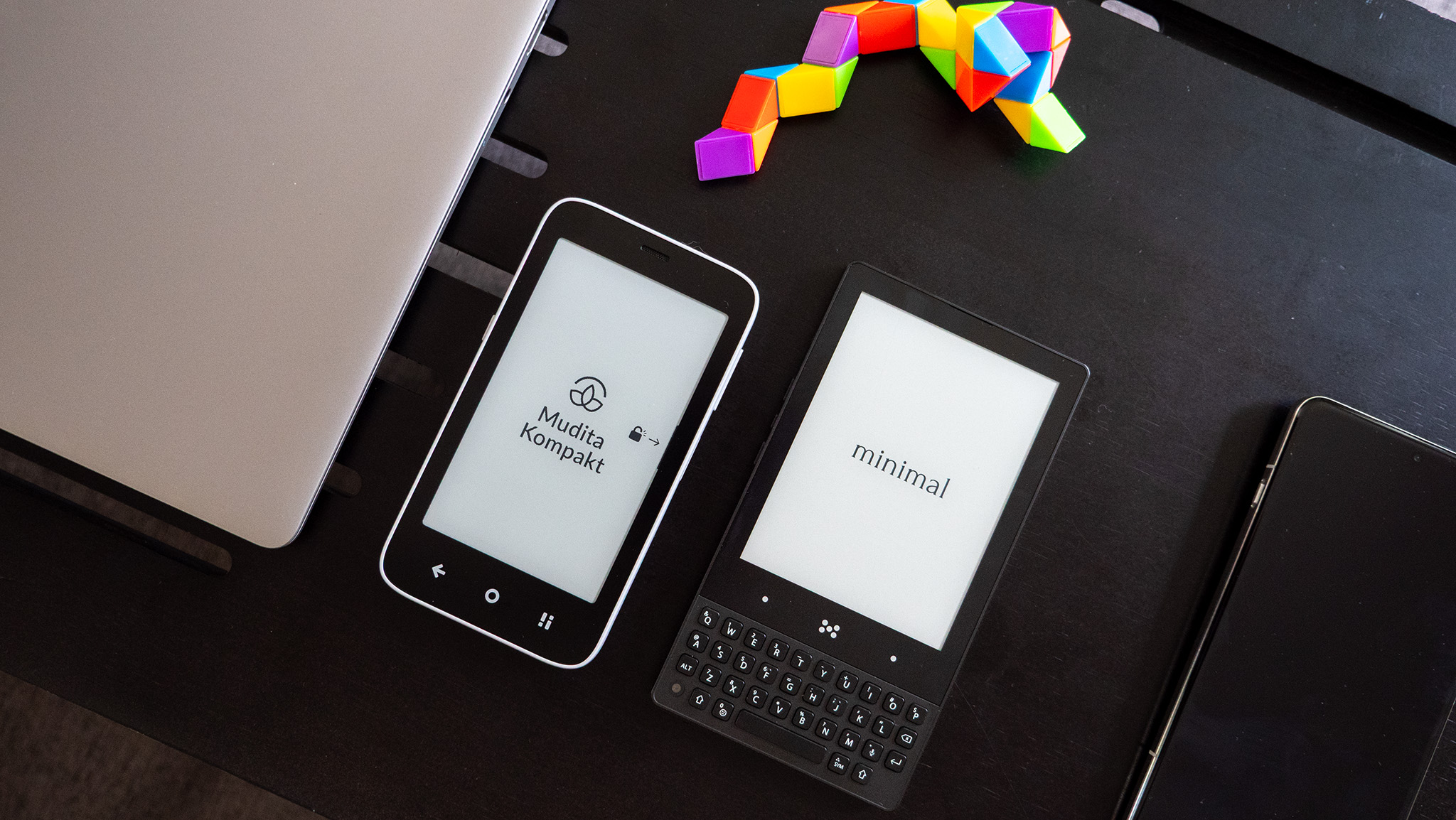Android Central Verdict
Bottom line: The POCO M2 Pro builds on a great foundation by offering 33W fast charging and an ad-free MIUI software experience. The 6.67-inch FHD+ screen is one of the best in this segment, the Snapdragon 720G delivers reliable performance, you'll easily get two-day battery life, the 48MP camera is great in day-to-day use, and the design is gorgeous. This is one of the best budget phones you'll find today.
Pros
- +
Outstanding value for money
- +
Robust internal hardware
- +
Incredible battery life
- +
33W fast charging
- +
Decent cameras
Cons
- -
Not great at low-light
- -
60Hz panel
Why you can trust Android Central
POCO's journey in 2020 is one of predictability. The POCO X2 debuted earlier this year after an 18-month lull following the launch of the breakout POCO F1, and the phone itself was a rebranded version of the Redmi K30. That wasn't a bad thing necessarily; POCO was able to differentiate on the software front, and because its version of MIUI doesn't include ads, the X2 was well-received.
POCO is following the same strategy with its latest phone, the M2 Pro. You only need to look at the hardware on offer to know that the phone is a rebranded Redmi Note 9 Pro. But there are a few standouts here: first, the design at the back is slightly different, and the two-tone pattern looks particularly great. Then there's the fact that the POCO M2 Pro has 33W fast charging, with a 33W charger included in the box. That's a big deal because the Indian version of the Redmi Note 9 Pro is limited to 18W fast charging, with the global model offering 30W charging.
But the biggest reason for being excited about the POCO M2 Pro is that it doesn't have any ads in MIUI. Unlike the Redmi Note 9 Pro and other budget Xiaomi phones in India, POCO devices do not serve ads, and you also get an app drawer and other software tweaks.
Basically, what you're getting here is an ad-free Redmi Note 9 Pro with 33W fast charging, and that makes the POCO M2 Pro one of the best budget phones you can buy right now in India.
POCO M2 Pro Design
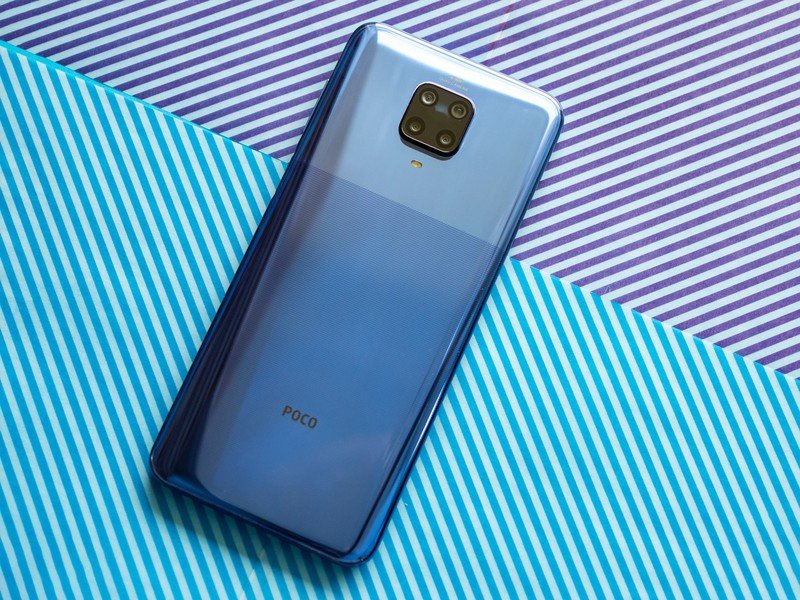
Because the POCO M2 Pro is based on the Redmi Note 9 Pro, the design feels familiar. You get a massive 6.67-inch panel at the front with a centered cutout for the front camera, and there are a few subtle changes to the design at the back. POCO added a two-tone finish, with the lower two-thirds of the glass featuring a pattern that POCO says is a homage to the textured pattern on the back of the POCO F1.
The POCO M2 Pro has a gorgeous two-tone finish that makes it stand out.
You don't get a textured finish as the pattern itself sits underneath the glass layer, but the two-tone design definitely gives the M2 Pro added visual flair. The overall aesthetic is very upmarket, and you get the same square camera housing as the Redmi Note 9 Pro that holds the 48MP sensor and the three auxiliary modules. The camera housing protrudes from the chassis, but it doesn't lead to any wobble when the phone is laid flat on a surface.
There are subtle curves at the back where the body meets the mid-frame, and that leads to better in-hand feel. Because of the 6.67-inch screen and the 5000mAh battery, the POCO M2 Pro is big and heavy, but for what it's worth the weight is distributed evenly across the chassis, and you don't feel the heft. That said, this is not a phone you can use one-handed. Both the front and rear panes of glass and the camera housing are protected by Gorilla Glass 5.
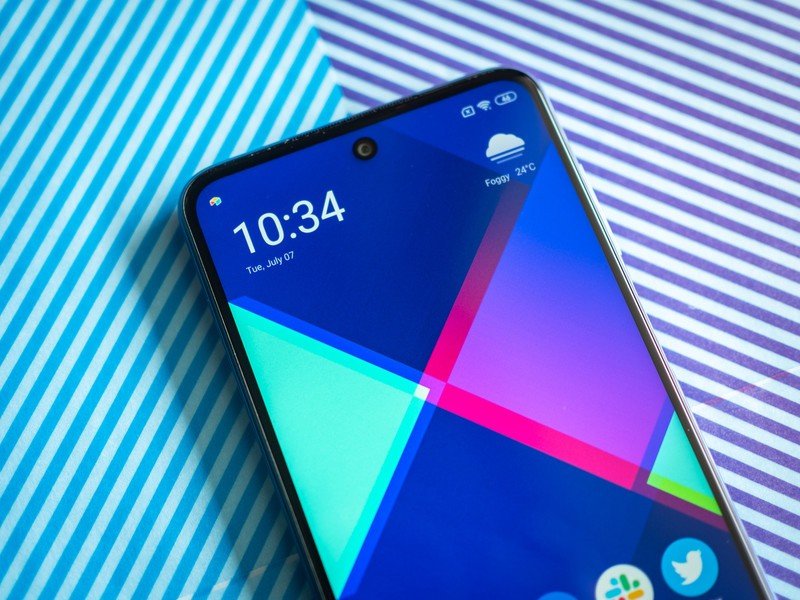
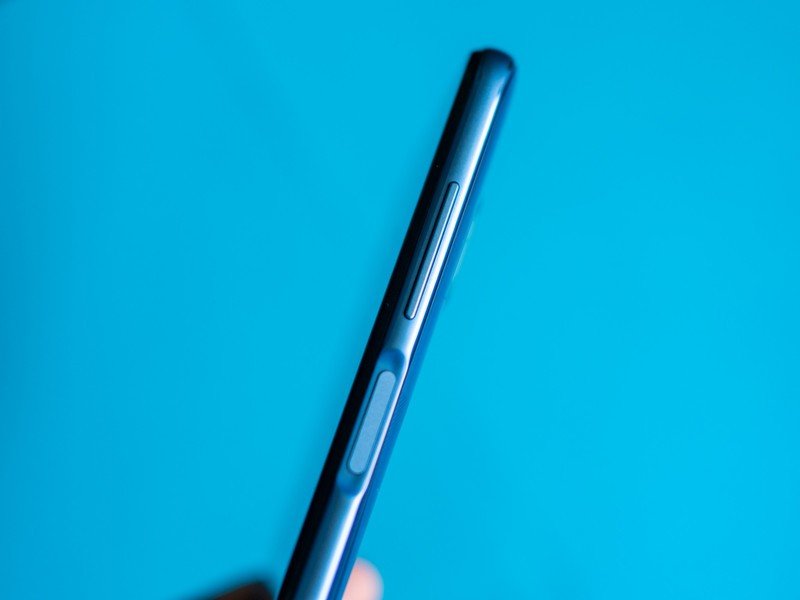
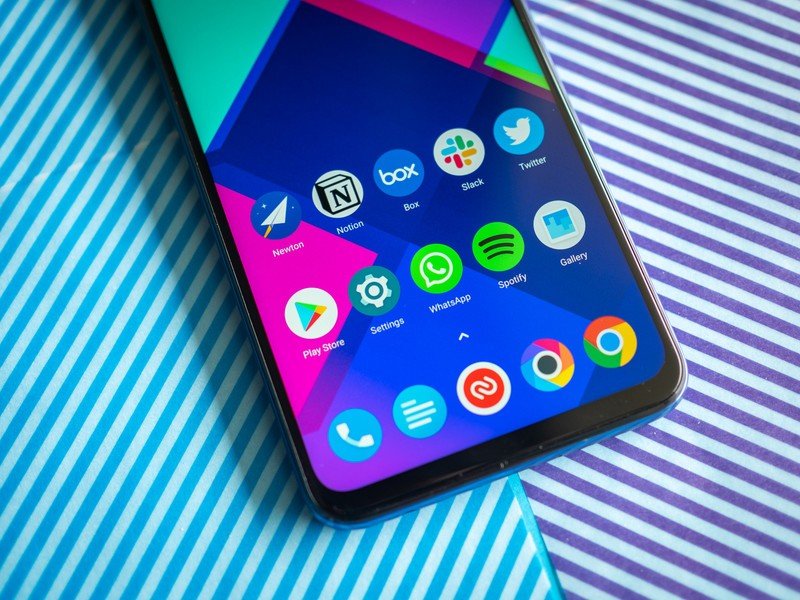
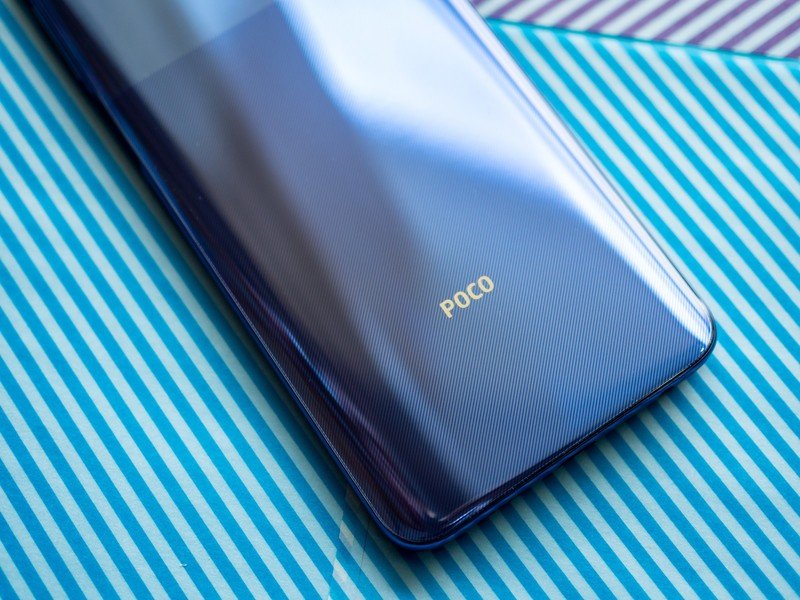
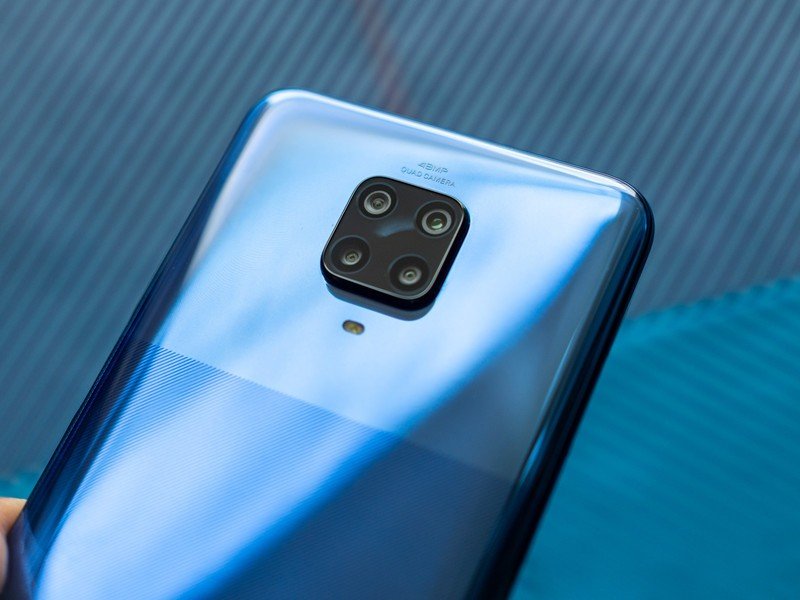
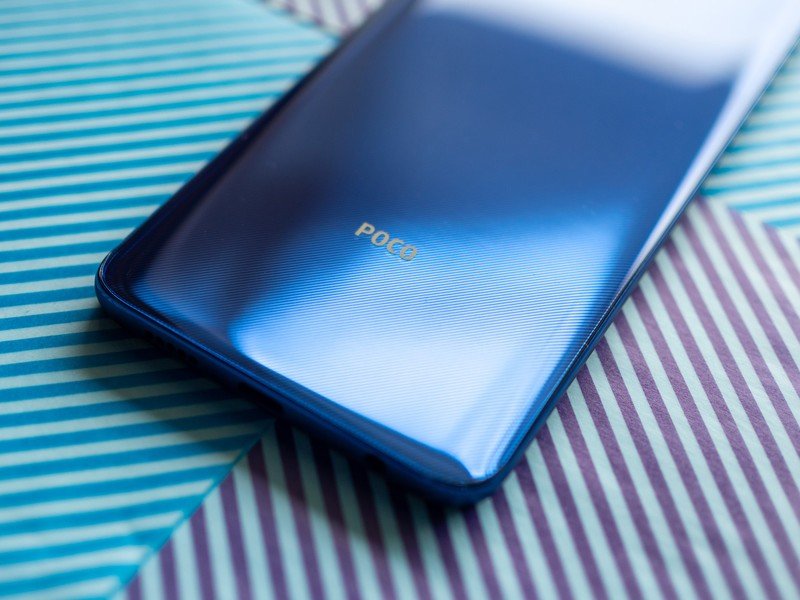
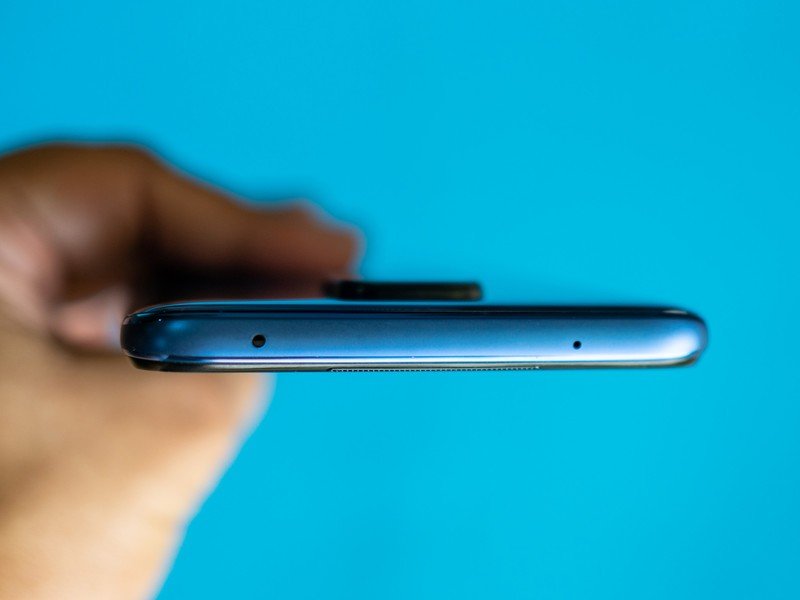
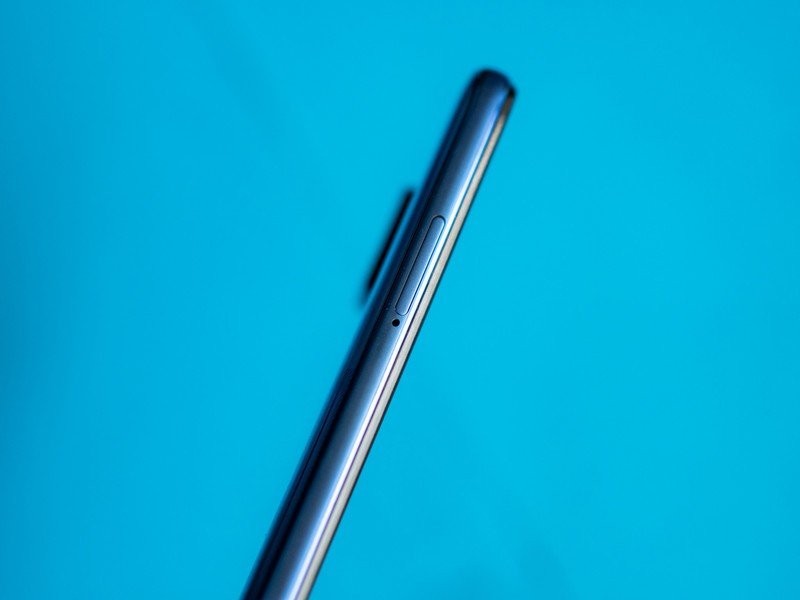
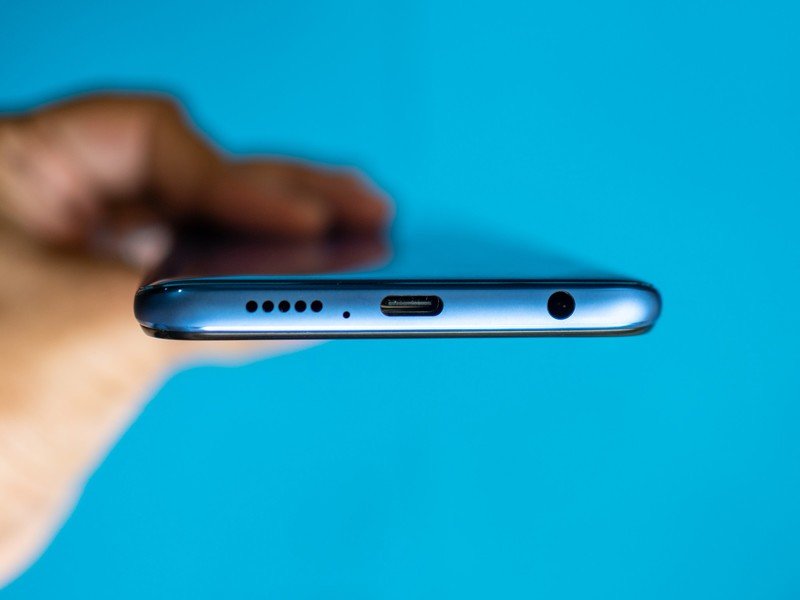
The M2 Pro has a side-mounted fingerprint sensor that's built into the power button. The volume keys are located just above the power button, and they have decent tactile feedback. Rounding out the design, the solitary speaker sits to the right of the USB-C charging port at the bottom, and you get a 3.5mm jack on the other side.
There's an IR blaster located at the top, and the SIM card tray is on the right side of the frame. The tray holds two SIM cards as well as a MicroSD card, so if you use two SIM cards and want to slot in a MicroSD card to boost storage, you have the ability to do just that here.
POCO is making the M2 Pro available in three color options — Out of the Blue, Green and Greener, and Two Shades of Black. The quirky naming for the colors is a fun addition, and the Out of the Blue color option in particular stands out. Overall, the M2 Pro doesn't deviate too much from the Redmi Note 9 Pro on the design front, but the subtle changes give the phone an identity of its own, and it is one of the best designs you'll find in the budget segment today.
POCO M2 Pro Display
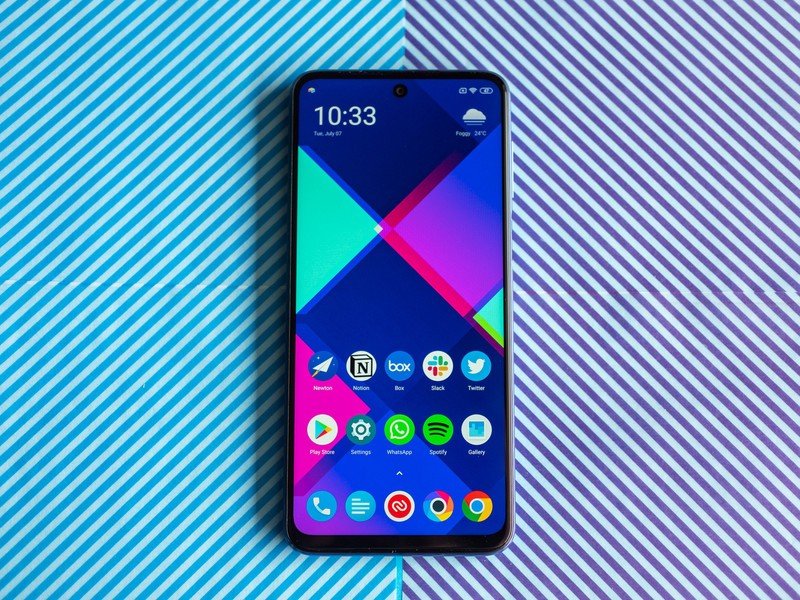
The M2 Pro features a 6.67-inch 20:9 IPS LCD display with a resolution of 2400 x 1080, and the panel itself is identical to what you get on the Redmi Note 9 Pro. It is a regular 60Hz display, but the panel is one of the best in the budget segment, and you get vibrant colors with excellent sunlight legibility thanks to auto brightness mode. There are relatively thin bezels at the front, and the cutout for the camera isn't too obtrusive.
You won't find a 90Hz display here, but the panel itself is vibrant.
The large screen is particularly great for streaming content and playing games, and considering the M2 Pro will be the primary screen for a majority of POCO's target audience, this is a positive move. You get the option to switch to saturated colors and manually adjust the color balance of the panel to your tastes, and you also get text scaling, a reading mode that switches to warm colors, and system-wide dark mode.
Overall, this is one of the best displays in the budget category, and while you miss out on 90Hz refresh rate, the quality of the screen makes up for that particular omission.
POCO M2 Pro Hardware
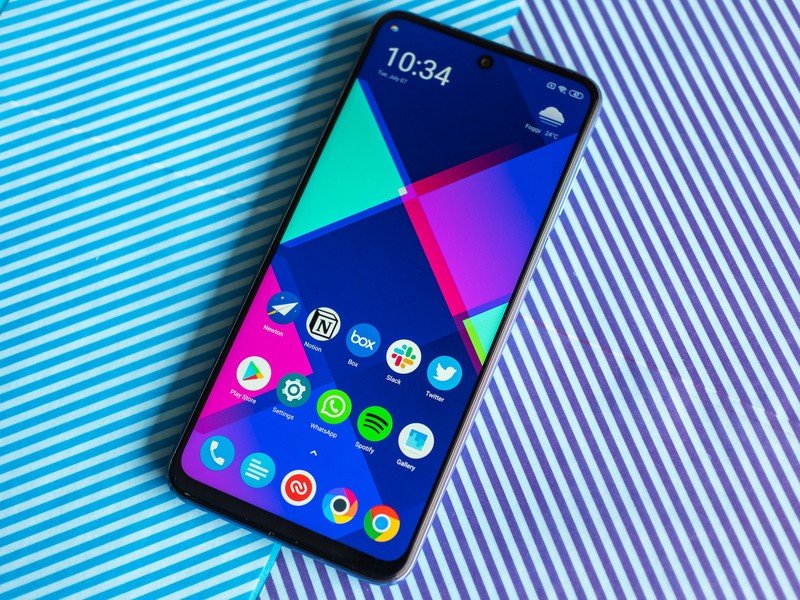
There is a lot to like on the hardware front with the POCO M2 Pro. The phone is powered by a Snapdragon 720G chipset, and the base variant has 4GB of RAM and 64GB of storage. POCO is also selling a variant with 6GB of RAM and 64GB of storage, and the high-end option comes with 6GB of RAM and 128GB of storage. All three models feature LPDDR4X RAM modules and UFS 2.1 storage.
| Specs | POCO M2 Pro |
|---|---|
| Software | MIUI 11 based on Android 10 |
| Display | 6.67-inch (2400x1080) 60Hz IPS LCD |
| Chipset | 2.30GHz Snapdragon 720G |
| RAM | 4GB/6GB |
| Storage | 64GB/128GB |
| Rear Camera 1 | 48MP ƒ/1.8 (primary) |
| Rear Camera 2 | 8MP ƒ/2.2 (wide-angle) |
| Rear Camera 3 | 5MP ƒ/2.4 (macro) |
| Rear Camera 4 | 2MP ƒ/2.2 (portrait) |
| Front Camera 1 | 16MP ƒ/2.5 |
| Connectivity | Wi-Fi 802.11 ac, BT5.0, NFC |
| Battery | 5000mAh | 33W |
| Security | Side-mounted fingerprint |
| Colors | Blue, Green, Black |
| Dimensions | 165.8 x 76.7 x 8.8mm |
| Weight | 209g |
The Snapdragon 720G is built on an 8nm node, and it has two cores in a 2+6 configuration: you get two Cortex A76-based cores that go up to 2.30GHz, and six energy-efficient A55-based cores that are clocked at 1.80GHz. The GPU here is the Adreno 618 — same as the Snapdragon 730.
The Snapdragon 720G has select Snapdragon Elite Gaming features that make it stand out from the regular Snapdragon 720, including anti-jitter and optimized connectivity so you don't see any issues in the middle of a gaming session.
When it comes to performance, the M2 Pro is one of the best phones in the budget category. The Snapdragon 720G delivers stellar performance in day-to-day tasks, and it holds up particularly well during gaming as well. This is one of the best chipsets in the budget segment right now, and you won't see any slowdowns or lag in regular use.
On the connectivity front, you get a Wi-Fi ac modem along with Bluetooth 5.0, NFC, FM radio, and the aforementioned IR blaster. The M2 Pro also has NavIC — India's satellite positioning system — baked in, and it has all the requisite LTE bands for India.
Like most Xiaomi phones in the last two years, the M2 Pro features a P2i coating that makes it resilient to splashes of water. The phone doesn't have an IP rating, but it should weather the occasional splash of water without any issues.
The M2 Pro comes with a capacitive fingerprint sensor that's built into the power button on the side, and it sits in an indent that makes it easy to locate. The positioning itself is ideal — the sensor sits just where your thumb rests on the mid-frame — and it allows you to easily unlock the phone. The sensor itself is unerringly accurate and fast, and this is an elegant alternative to using an in-screen module.
To sum up the hardware, the M2 Pro has everything you're looking for in the budget segment. You get a robust chipset that should hold its own for a few years, and with three configuration options available, you can pick the model that best suits your needs.
POCO M2 Pro Battery life
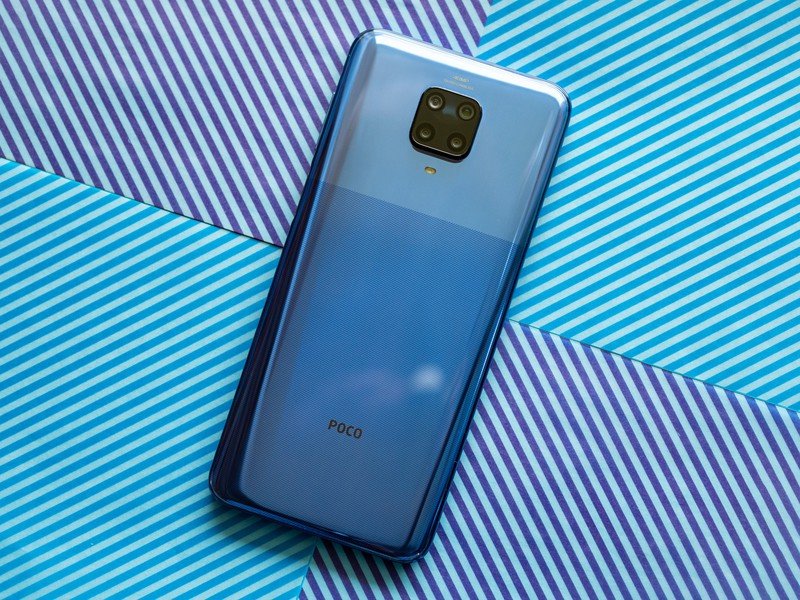
The M2 Pro is an absolute beast when it comes to the battery side of things. With a 5000mAh battery under the hood, you'll easily get two days of usage from a full charge. Battery life is a core tenet for Xiaomi, and that hasn't changed with POCO and Redmi. You will see anywhere from eight to ten hours of screen-on-time over a full charge, and MIUI has a robust battery saver mode that will allow you to extend the battery life even more.
With a 5000mAh battery and 33W fast charging, the POCO M2 Pro is a battery life champion.
POCO says customer feedback was one of the main considerations that led to the inclusion of the 33W fast charging. With a 5000mAh battery, you don't have to charge the M2 Pro during the day, but the brand says that a lot of users wanted fast charging so that they could top up their phones in the middle of the day, so POCO added that feature.
Battery longevity is a key factor when picking up a phone in India, but fast charging also makes a huge difference. And in that context, the M2 Pro has a clear-cut advantage over the Redmi Note 9 Pro and other budget phones in India. If battery life is a key consideration for you, the M2 Pro delivers everything you're looking for, and then some.
POCO M2 Pro Cameras
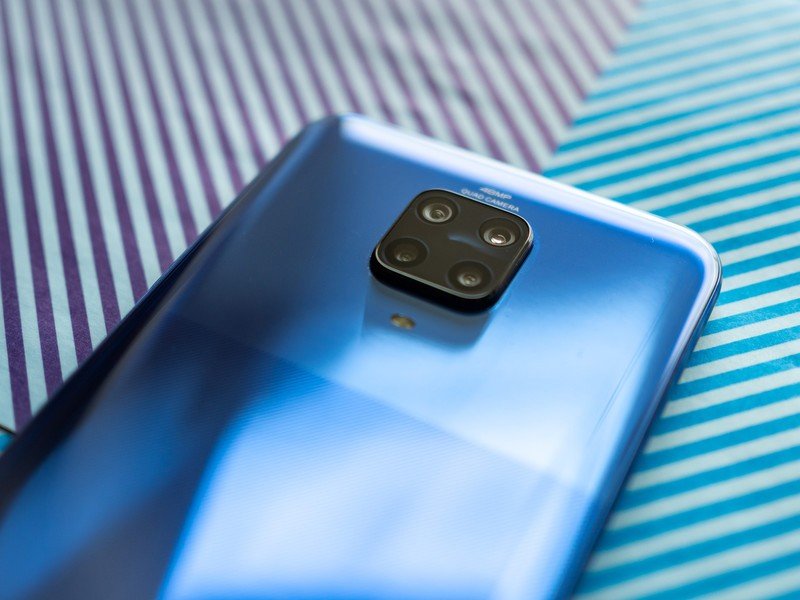
The POCO M2 Pro has quad cameras at the back, with a primary 48MP camera backed by an 8MP wide-angle lens, 5MP macro lens, and a 2MP camera that's dedicated for portrait shots. The differentiator here is that the 5MP macro lens now offers 1080p video recording, with POCO noting that its customers wanted that particular feature.
You get versatile cameras that take decent shots in most scenarios.
The camera interface should be immediately familiar if you've used a Redmi device in the last two years: all the modes are laid out on a ribbon at the bottom, and you have toggles for HDR, AI-assisted scene recognition, beauty filters, and flash. POCO has added a Pro color mode that boosts the saturation and contrast of shots, making everyday shots look more artistic.
You can switch between the wide-angle and standard lenses from dedicated toggles that sit just above the ribbon at the bottom, and you also get a 2x zoom mode that's handled by the primary camera. The macro mode is hidden away behind the action overflow menu, so there's a chance that a few users will miss seeing the feature altogether.
You get slow-motion, short video, portrait mode, dedicated night mode, panorama, and the ability to take full-res shots from the 48MP sensor. There's also a Pro mode that gives you greater control over the shutter speed, white balance, and exposure settings, and the phone lets you shoot in RAW.
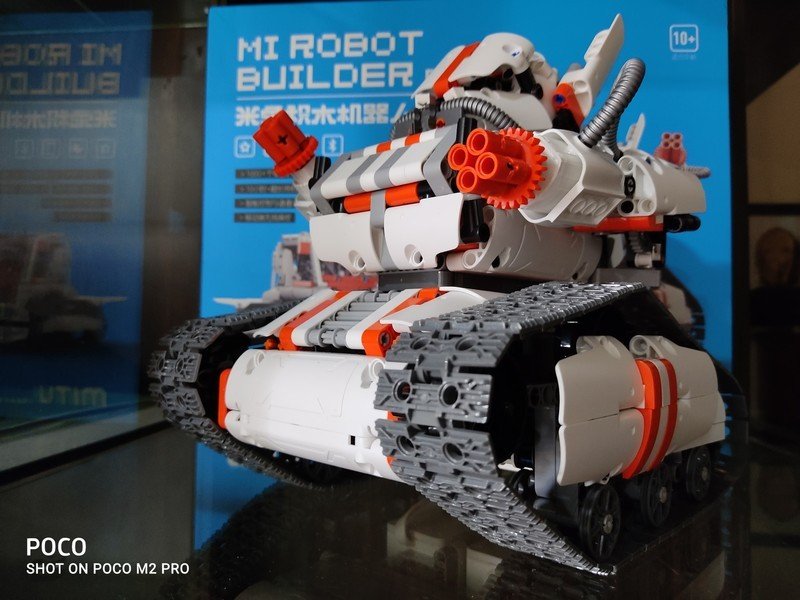
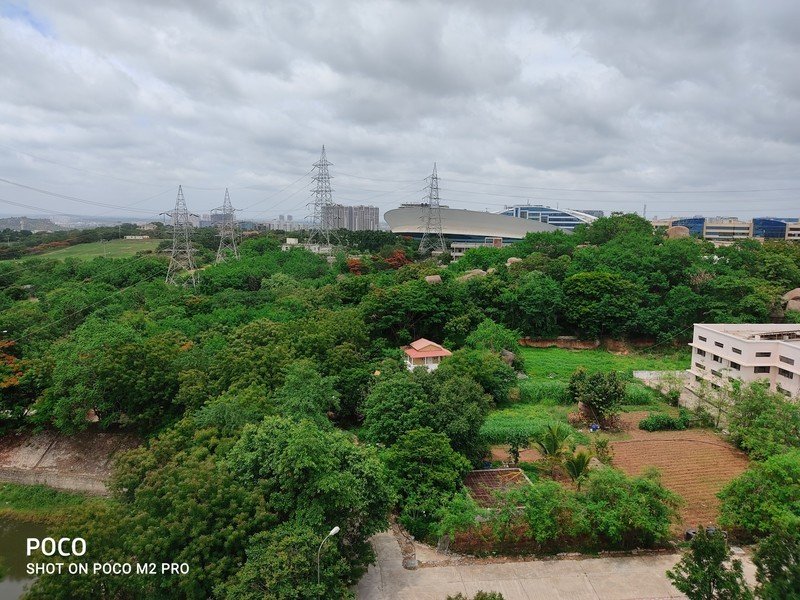
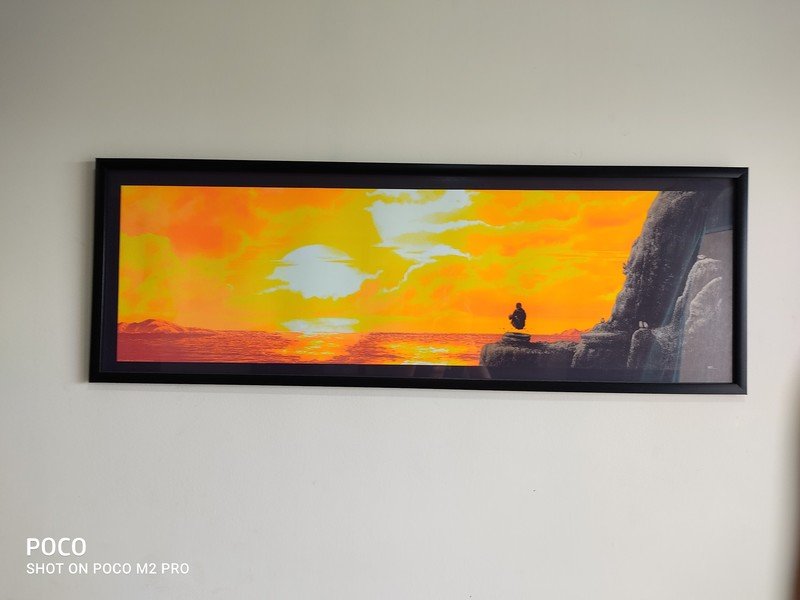
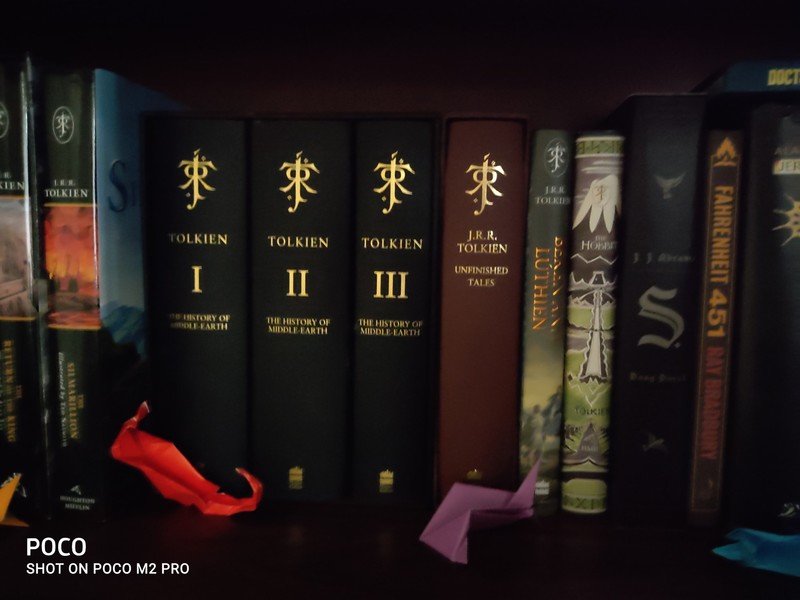
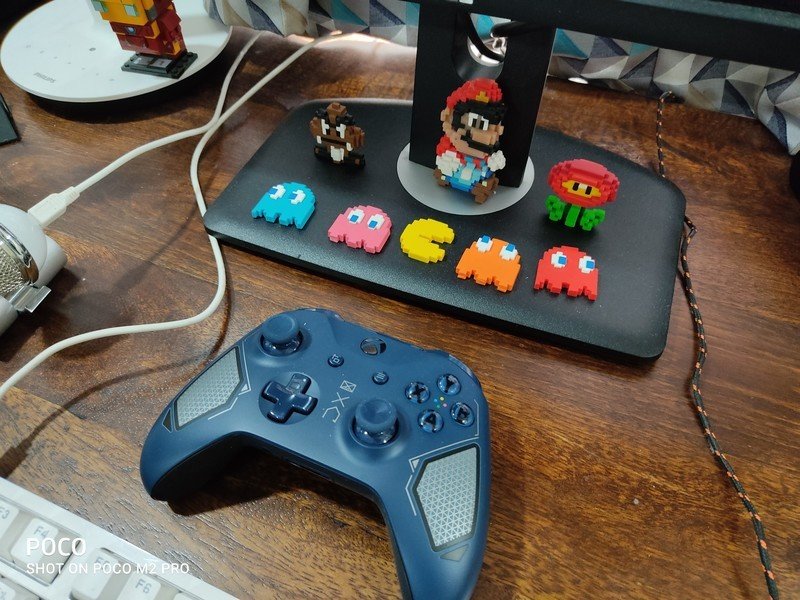
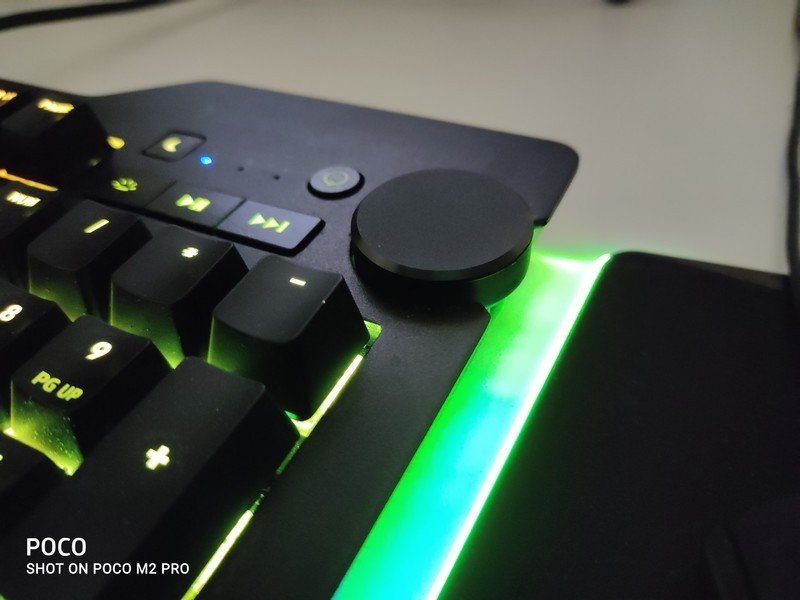
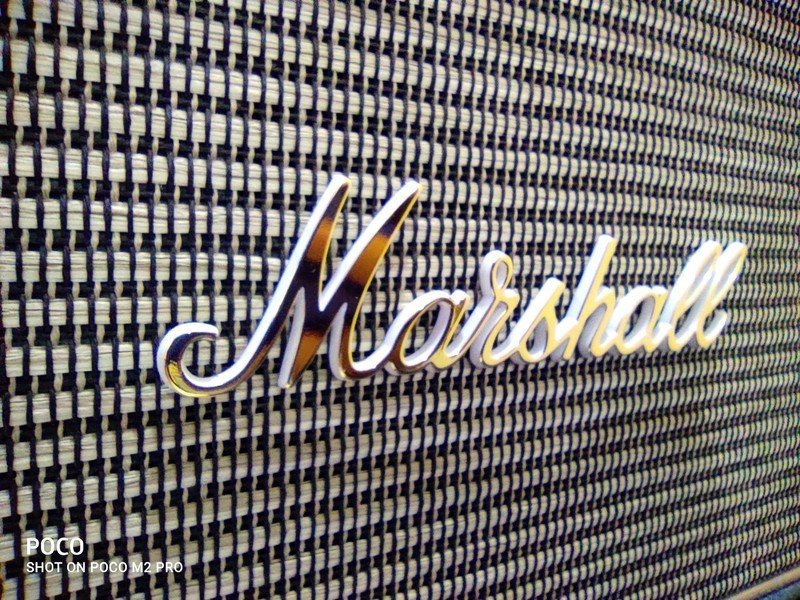
It's a similar story when it comes to the quality of the resultant photos: shots taken in daylight come out with plenty of detail and great vibrancy, but the camera struggles in low-light scenarios. This is common enough in the budget segment, and the M2 Pro relies on pixel binning to produce 12MP shots from the main sensor. Photos taken outdoors or under artificial lighting have great dynamic range and high contrast levels, and there are a few instances where photos look oversaturated. The wide-angle lens does a decent job in this area as well.
Photos in low-light conditions are muddy and lack any meaningful detail, and there's just too much noise. The 5MP macro mode is also a letdown, with the module just not able to produce fine detail. The POCO M2 Pro has a decent enough camera considering how much it costs, and you get a decent amount of versatility with the wide-angle lens, 2x zoom, and that macro lens.
POCO M2 Pro Software

The M2 Pro comes with MIUI 11.0.2 based on Android 10 out of the box. The phone comes with the June security patch out of the box, and POCO will deliver security updates at least once a quarter. What's interesting about POCO is that even though it is using MIUI, it has added its own set of customizations that go a long way in making the user interface that much more enticing.
The best part about MIUI on the M2 Pro is that it doesn't have ads.
First up, you get an app drawer out of the box thanks to the POCO Launcher. You can install the POCO Launcher from the Play Store on Xiaomi and Redmi phones, but the fact that it's pre-installed makes things that much easier on the M2 Pro. Xiaomi is adding an app drawer natively in MIUI 12, but that particular build is still making its way to the first set of phones.
But the biggest differentiator on the software front is that the M2 Pro does not have any ads in MIUI. That's a stark contrast to what you get on the Redmi Note 9 Pro and other budget Redmi phones in India, and if you're looking for an ad-free version of MIUI, the POCO M2 Pro is the ideal alternative. Ads have been a particular point of contention for Xiaomi customers in India, so in that context it is great to see that there is an option available in the budget segment without any ads.
All the features that are standard in MIUI 11 are available on the M2 Pro. You get a system-wide dark mode that works great across the board, Android 10's default navigation gestures, a cleaner design with updated icons, text scaling, much-needed tweaks to Mi Share, and new ringtones and notification tones inspired by nature. You get a lot of positive changes here, and the fact that there are no ads in the interface makes using the M2 Pro that much more enjoyable.
POCO M2 Pro Competition
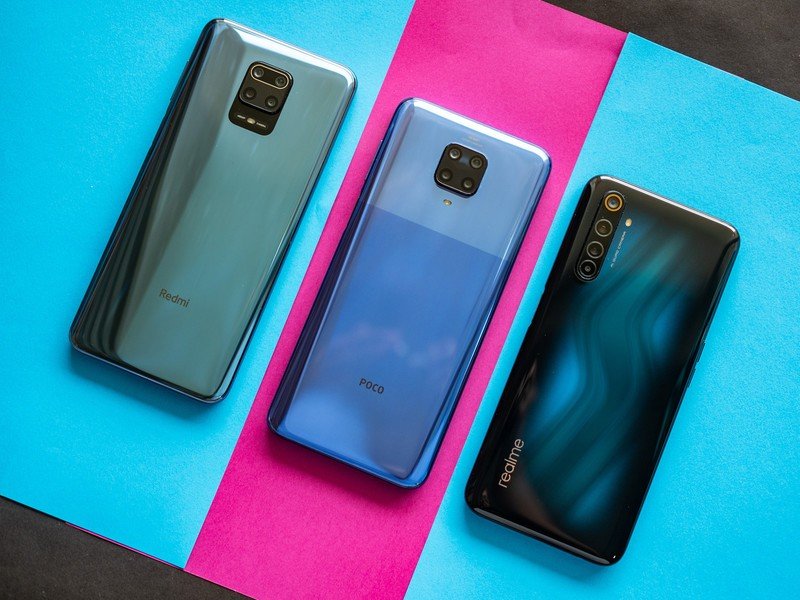
When talking about the budget segment, the obvious alternative to the POCO M2 Pro is the Realme 6 series. The standard Realme 6 is available for ₹14,999 ($200) and has a MediaTek Helio G90T chipset along with a 64MP camera, 90Hz display, and 4300mAh battery with 30W fast charging. The standout feature on the Realme 6 is that the software is clean, and you don't get as much bloatware.
Then there's the Realme 6 Pro, which also has a 90Hz LCD display and 4300mAh battery with 30W charging but features a Snapdragon 720G. You get a 64MP camera and 12MP zoom lens, and the phone costs ₹17,999 ($240).
The POCO X2 is also a great option if you want a 120Hz screen and a beefier Snapdragon 730G chipset, with that particular phone available for ₹17,499 ($235). The X2 has a 64MP camera and a 4500mAh battery, and you get dual 20MP + 2MP cameras at the front.
Finally, Motorola has a decent option in this category after several years. The One Fusion+ features a Snapdragon 730G chipset, 6GB of RAM and 128GB of storage, 64MP camera, 5000mAh battery, and clean software for just ₹17,499 ($235).
POCO M2 Pro Should you buy it?
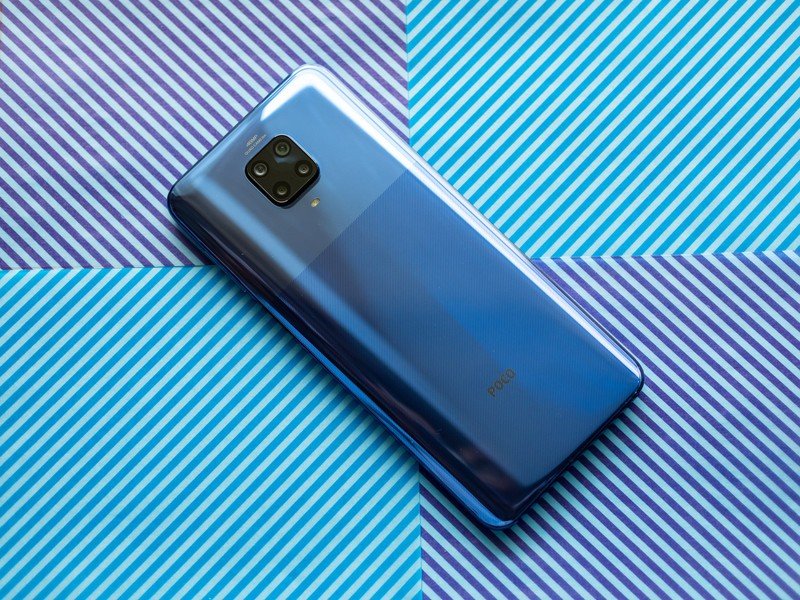
Who it's for
- If you're looking for a phone with two-day battery life and over 30W fast charging
- If you need a phone that gives you the best value in this category
- If you're looking for a phone with a large display and vibrant colors
- If you want versatile cameras that can take decent photos
Who it isn't for
- If you want a compact device
- If you're looking for a 90Hz screen
The POCO M2 Pro is based on the Redmi Note 9 Pro, but it has a few key standout features that give it an edge. First and foremost is the fact that it doesn't contain any ads in MIUI. Any conversation around Xiaomi and Redmi over the last two years has centered around ads in MIUI, and with millions of users inundated with ads every day, the backlash is warranted.
The POCO M2 Pro is a better version of the Redmi Note 9 Pro because of ad-free MIUI.
Thankfully, you don't have to put up with any of that on the POCO M2 Pro. POCO has confirmed that it will not show any ads within MIUI, and in the week or so that I used the M2 Pro, I didn't see any ads either. The POCO Launcher is also a highlight here, and its ability to automatically sort apps into categories is a useful addition.
I focused on the software being the differentiator with the M2 Pro because the hardware itself is excellent for what you're paying. The massive 6.67-inch display is ideal for watching movies and playing games, the 48MP camera holds up in most scenarios, the Snapdragon 720G is reliable in day-to-day use, and the battery life from the 5000mAh battery is outstanding. It's great to see POCO offer a 33W charger out of the box, and that makes an already great phone much better.
4 out of 5
To sum it up, the POCO M2 Pro fixes the few flaws that were present in the Redmi Note 9 Pro, and that makes it one of the best budget phones you can buy in India. The 4GB/64GB model starts off at just ₹13,999 ($187), the 6GB/64GB variant is available for ₹14,999 ($200), and the 6GB/128GB model costs ₹16,999 ($227). The phone will be up for sale starting July 14 in India.
The main issue plaguing phones in the budget segment is availability. Flash sales continue to be the standard in India, but component shortages have hit all manufacturers in recent months, and it has become particularly challenging to pick up most of the budget options in the market. POCO says it will have adequate units of the M2 Pro available at launch, so if you're holding out for a budget phone, the M2 Pro could be the default option on the basis of availability alone.
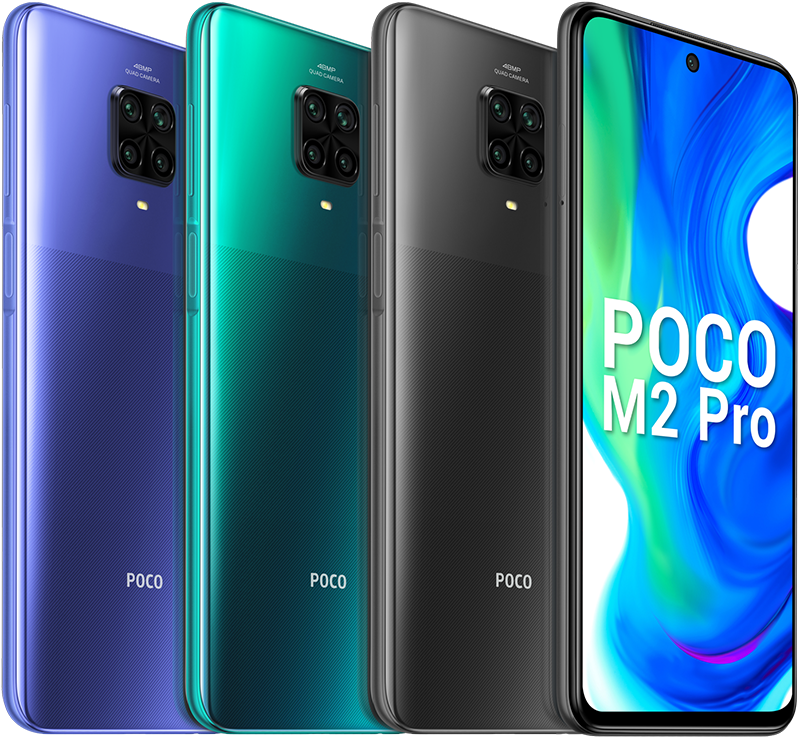
A truly great budget phone
The POCO M2 Pro builds on a great foundation by offering 33W fast charging and an ad-free MIUI software experience. The 6.67-inch FHD+ screen is one of the best in this segment, the Snapdragon 720G delivers reliable performance, you'll easily get two-day battery life, the 64MP camera is great in day-to-day use, and the design is gorgeous. The M2 Pro is one of the best budget phones you'll find today.

Harish Jonnalagadda is Android Central's Senior Editor overseeing mobile coverage. In his current role, he leads the site's coverage of Chinese phone brands, networking products, and AV gear. He has been testing phones for over a decade, and has extensive experience in mobile hardware and the global semiconductor industry. Contact him on Twitter at @chunkynerd.

